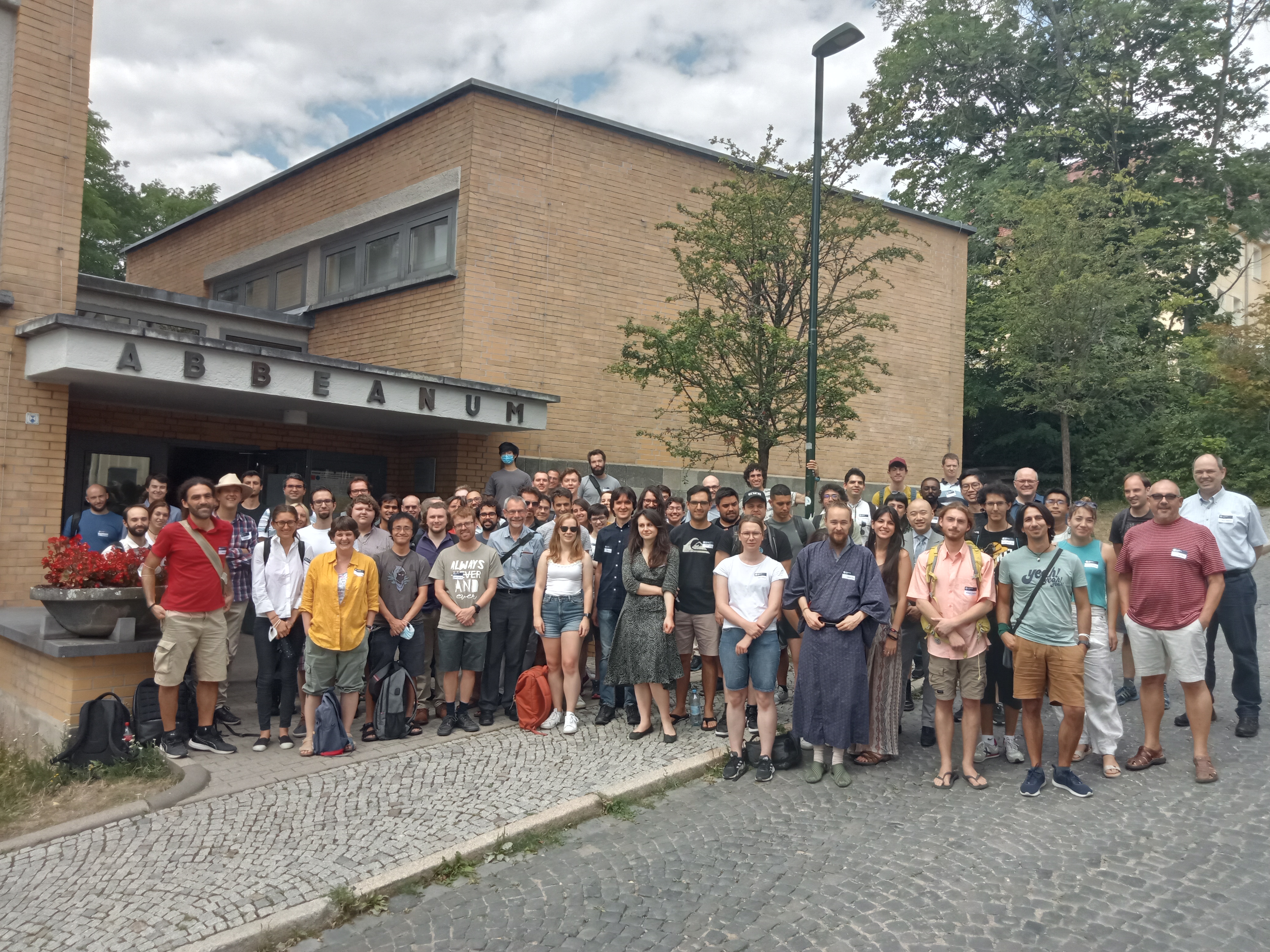In the history of numerical (or computational) general relativity, the "Frontiers" meeting in 1988 at the University of Illinois, Urbana-Champaign (USA), played a pivotal role in establishing numerical relativity as a major topic in computational physics and simulation science. The "New Frontiers" meeting in 2006 at the AEI Potsdam convened after major breakthroughs in numerical simulations of binary systems.
The goal of "Frontiers 2022" is to assess the state-of-the-art and point out future directions of numerical relativity in light of the breakthroughs in observations of gravitational waves and astrophysical counterparts.
Main Topics
-
Mathematical foundations
-
Numerical methods for the Einstein equations
-
High performance computing
-
Astrophysics (binary mergers, gravitational waves, counterparts)
-
Beyond current astrophysics and general relativity
Invited Speakers
-
Andreas Bauswein (GSI Helmholtzzentrum für Schwerionenforschung)
-
Katy Clough (Queen Mary University of London)
-
Nils Deppe (California Institute of Technology)
-
Tim Dietrich (University of Potsdam)
-
Pau Figueras (Queen Mary University of London)
-
David Hilditch (Instituto Superior Tecnico, Lisbon)
-
Kenta Kiuchi (Max Planck Institute for Gravitational Physics)
-
David Neilsen (Brigham Young University)
-
Carlos Palenzuela (Universitat de les Illes Baleares)
-
Ulrich Sperhake (University of Cambridge)
-
Wolfgang Tichy (Florida Atlantic University)
Scientific Organizing Committee
-
S. Bernuzzi
-
B. Brügmann (chair)
-
M. Campanelli
-
C. Gundlach
-
L. Lehner
-
H. Pfeiffer
-
L. Rezzolla
-
M. Shibata
Local Organizing Committee
-
Roxana Rosca-Mead
-
Alejandra Gonzalez
-
Katrin Kanter
-
Georgios Doulis
Important Timetable and Deadlines:
-
Registration and Abstract Submission Open: February 9, 2022
-
Abstract Submission and Registration Deadline: May 25, 2022

